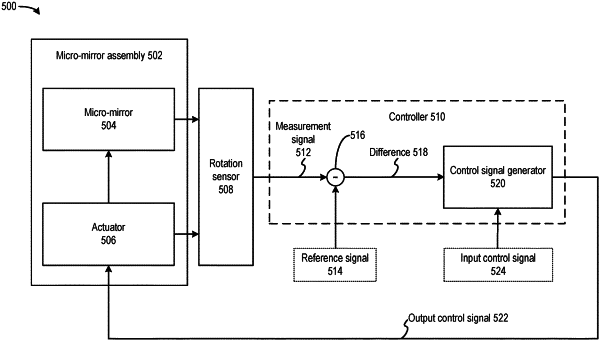| CPC G01S 7/4817 (2013.01) [G01S 7/484 (2013.01); G01S 17/931 (2020.01); G02B 26/0841 (2013.01); G02B 26/10 (2013.01)] | 20 Claims |

|
1. An apparatus, the apparatus being part of a Light Detection and Ranging (LiDAR) module of a vehicle and comprising:
a semiconductor integrated circuit comprising a microelectromechanical system (MEMS) and a controller, the MEMS comprising an micro-mirror assembly, the micro-mirror assembly comprising:
a rotatable micro-mirror connected to a substrate and configured to perform at least one of: reflect light from a light source along an output projection path, or reflect input light propagating along an input collection path to a receiver;
an actuator controllable by the controller configured to cause the micro-mirror to perform an oscillatory rotation; and
a sensor configured to generate a measurement signal corresponding to the oscillatory rotation of the micro-mirror; and
wherein the controller is coupled with the micro-mirror assembly and configured to:
receive a reference signal including information of a target oscillatory rotation of the micro-mirror;
receive, from the sensor, the measurement signal of an oscillatory rotation of the micro-mirror;
determine, based on the measurement signal and the information included in the reference signal, a difference between the oscillatory rotation of the micro-mirror and the target oscillatory rotation;
receive an input control signal that sets a phase and an amplitude of the oscillatory rotation of the micro-mirror;
generate, based on the difference and the input control signal, an output control signal associated with at least one of a phase or an amplitude of the oscillatory rotation of the micro-mirror; and
transmit the output control signal to the actuator, wherein the transmission of the output control signal enables the actuator to adjust at least one of the phase or the amplitude of the oscillatory rotation of the micro-mirror.
|